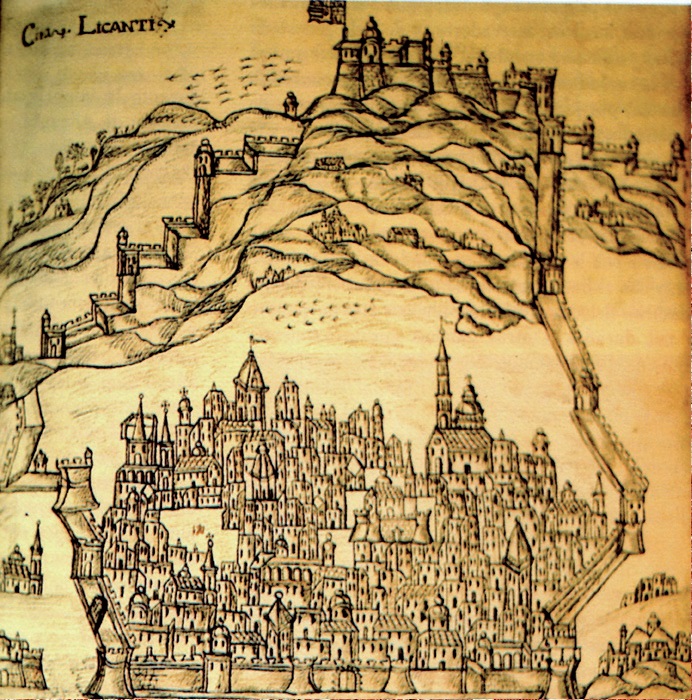Guardians of Stone. The Castles of Alacant
The province of Alacant is, without a doubt, a land of castles. More than 230 castles, fortifications, coastal towers, refuge towers, fortified houses, forts and batteries populate the territory of Alacant and represent a very important part of the cultural heritage of our cities, towns and villages, where they still keep the memory of our history inside their solid walls. Throughout our history, the uniqueness of our orography has turned the territory of Alacant into a crossroads and frontier between kingdoms and cultures, and has been the direct scene of the confrontation for power and land, or of the struggle of the peaceful inhabitants of the coast against the feared corsair raids.
Guardians of Stone. Els Castells d'Alacant is a travelling exhibition that invites us to travel around our province of Alacant in search of our own stone guardians, looking for those monuments that startle us, that impress us, that revisit the harshness of everyday life within their walls and that tell us, to the murmur of their worn stones, the vicissitudes and grievances that they suffered in the past.
THE CASTLES OF TUDMIR
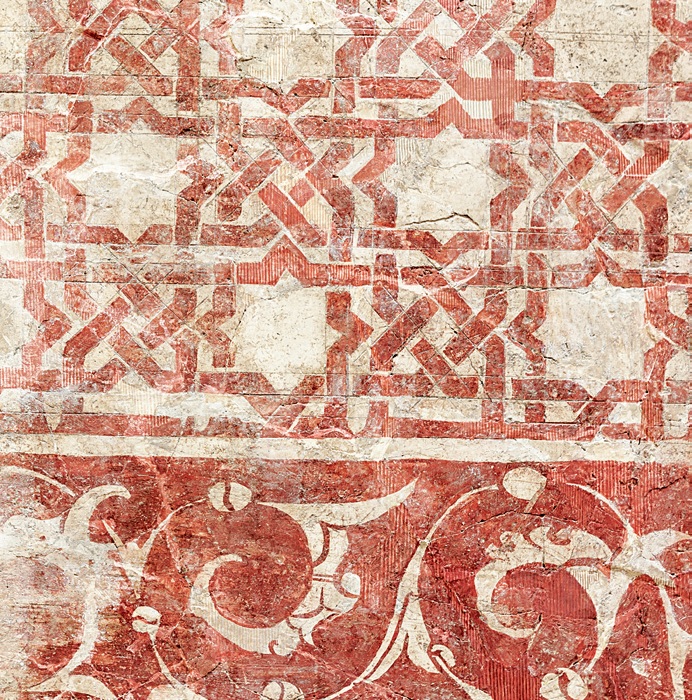 The Baix Segura corresponds to a vast territory where you can find mountains and plains, plains areas and high ridges, dominated by the presence of the Segura river, which is the backbone of an area which was part of the former kūra o província islàmica de Tudmīra vast territory whose administration was retained by the Visigoth nobleman known as Teodomiro ḅ. Gandarīš by virtue of'a pact signed with the conqueror 'Abd al-'Azīzḅ. Mūsàen l'any 713. In this region there are the great fortifications that dominate the main towns, such as Oriola, Callosa del Segura, Cox and excellent examples of coastal defences, such as the towers of Cap Roig, Cap Cerver and La Mata.
The Baix Segura corresponds to a vast territory where you can find mountains and plains, plains areas and high ridges, dominated by the presence of the Segura river, which is the backbone of an area which was part of the former kūra o província islàmica de Tudmīra vast territory whose administration was retained by the Visigoth nobleman known as Teodomiro ḅ. Gandarīš by virtue of'a pact signed with the conqueror 'Abd al-'Azīzḅ. Mūsàen l'any 713. In this region there are the great fortifications that dominate the main towns, such as Oriola, Callosa del Segura, Cox and excellent examples of coastal defences, such as the towers of Cap Roig, Cap Cerver and La Mata.
ELS CASTELLS DE LA FRONTERA INTERIOR
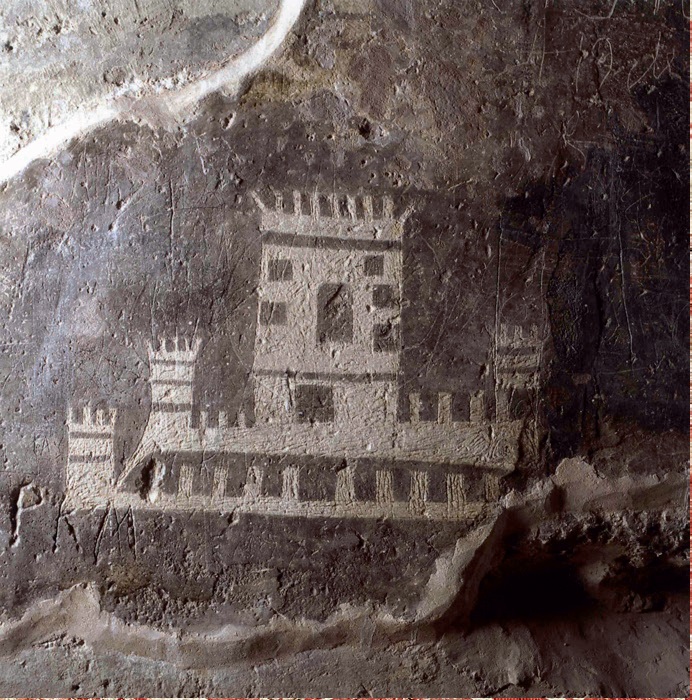 One of the great borders that has divided our territory is the one generated in the Almirra Pact signed between the crowns of Castile and Aragon in 1244, which was later ratified with the Torrellas-Elx Sentence in 1305. Since then, a large part of the Vinalopó Valley has lived in a permanent state of uncertainty and insecurity, becoming a frontier area where cavalcades, raids, invasions, conquests, recoveries and conflicts of greater or lesser magnitude have taken place over time. It is the interior frontier, where the crowns of Aragon and Castile have multiple fortifications with which to offer some protection to the colonists and Muslims who live in this area and who have left us some of the most beautiful and spectacular castles of our province such as the castles of Biar, Villena, Sax, Novelda or l'Alcàsser de la Senyoria in Elx.
One of the great borders that has divided our territory is the one generated in the Almirra Pact signed between the crowns of Castile and Aragon in 1244, which was later ratified with the Torrellas-Elx Sentence in 1305. Since then, a large part of the Vinalopó Valley has lived in a permanent state of uncertainty and insecurity, becoming a frontier area where cavalcades, raids, invasions, conquests, recoveries and conflicts of greater or lesser magnitude have taken place over time. It is the interior frontier, where the crowns of Aragon and Castile have multiple fortifications with which to offer some protection to the colonists and Muslims who live in this area and who have left us some of the most beautiful and spectacular castles of our province such as the castles of Biar, Villena, Sax, Novelda or l'Alcàsser de la Senyoria in Elx.
ELS CASTELLS DE LA CLAU DEL REGNE
The territory that s'identifies with the region of l'Alacantí is the one that the kings will call la Clau del Regnewhere the city of Alacant is a fundamental strategic centre due to the impregnable layout of its castle and its walls, a work born from the skilful mind of engineers, mainly brought from Italy by King Philip II, such as Giovanni Battista Antonelli, known as il Vecchio, Giorgio Palearo Il FratinoCristòfol Antonelli, Giovanni Battista Calvi, Vespasià Gonzaga, among others, and who went on to influence others such as Joan Riera and Fernando Méndez de Ras.
ELS CASTELLS DE LA MUNTANYA
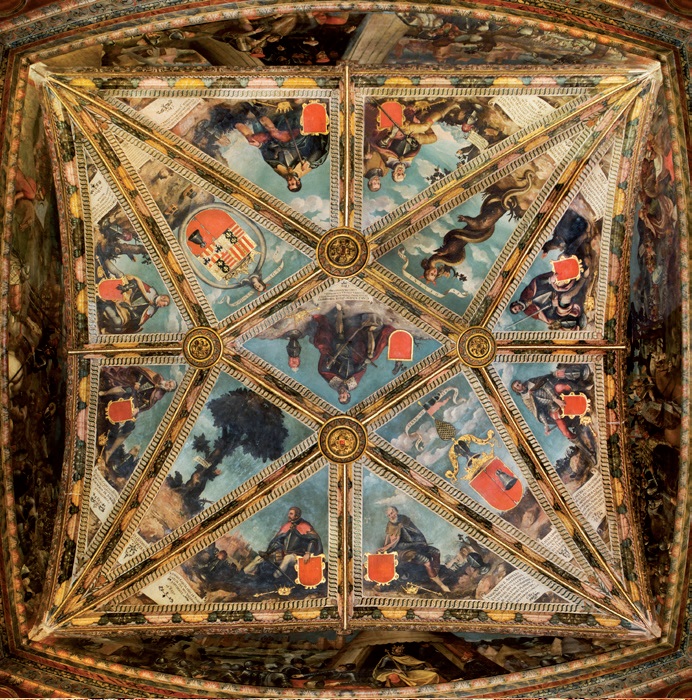 The Alicante mountain range is characterised by numerous hills and mountain ranges overhung by rivers and streams where the population grew, becoming rich and fertile areas. There's many castles, simple enclaves enclave encinglerats. Others were built in the Almohad period to house and defend the population, such as Planes, Perputxent a l'Orxa or the Castell de la Torre Grossa in Xixona. Many towers were raised to defend the farmsteads of the territory, such as Almudaina or the Torre de les Maçanes. The Christian conquest allowed King James I to reach an agreement with the Muslim aljams through which he became the new lord of a territory that ended up rising up in rebellion under the command of the kabdill al-Azraq. The conflict ended in 1276, with the submission of the Moors to the new walled towns of Alcoi, Cocentaina and Penàguila, which were handed over to the main lords of the land, such as the Calabrian almirall Roger de Calabria, and the Calabrian almirall Roger de Calabria's lord, Roger de Calabria's lord, Roger de Calabria's lord, Roger de Calabria's lord, Roger de Calabria's lord, Roger de Calabria's lord, Roger de Calabria's lord;Calabrian admiral Roger de Llúria, lord of Alcoi and Cocentaina; Teresa Gil de Vidaure in Planes, Ponç Guillem de Villafranca in Penella, Ramon de Vilanova in Castalla or in later periods, figures such as Eximén Pérez de Corella as Comte de Cocentaina.
The Alicante mountain range is characterised by numerous hills and mountain ranges overhung by rivers and streams where the population grew, becoming rich and fertile areas. There's many castles, simple enclaves enclave encinglerats. Others were built in the Almohad period to house and defend the population, such as Planes, Perputxent a l'Orxa or the Castell de la Torre Grossa in Xixona. Many towers were raised to defend the farmsteads of the territory, such as Almudaina or the Torre de les Maçanes. The Christian conquest allowed King James I to reach an agreement with the Muslim aljams through which he became the new lord of a territory that ended up rising up in rebellion under the command of the kabdill al-Azraq. The conflict ended in 1276, with the submission of the Moors to the new walled towns of Alcoi, Cocentaina and Penàguila, which were handed over to the main lords of the land, such as the Calabrian almirall Roger de Calabria, and the Calabrian almirall Roger de Calabria's lord, Roger de Calabria's lord, Roger de Calabria's lord, Roger de Calabria's lord, Roger de Calabria's lord, Roger de Calabria's lord, Roger de Calabria's lord;Calabrian admiral Roger de Llúria, lord of Alcoi and Cocentaina; Teresa Gil de Vidaure in Planes, Ponç Guillem de Villafranca in Penella, Ramon de Vilanova in Castalla or in later periods, figures such as Eximén Pérez de Corella as Comte de Cocentaina.
ELS CASTELLS DE LA FRONTERA DE LA POR
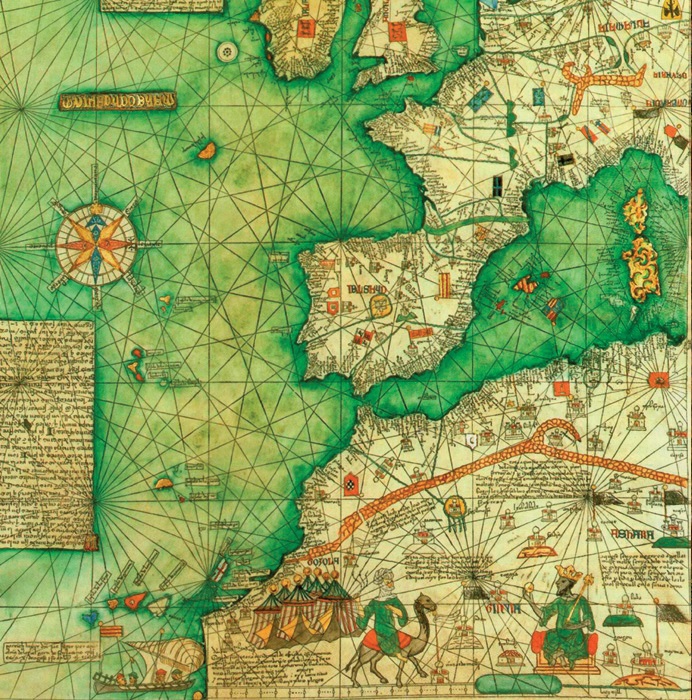 For many centuries, our coastline was considered the frontier of pork, a geographical line marked by a special orography, a sea and mountain barrier, the exploitation of which was the economic basis of a population settled in these terms, which became the meat of kidnapping and extortion by the most daring corsairs. Names like Aruj Barba-rossa, Khayr al-Din Barba-rossa, Turgut Reis, better known as Dragut, Euljd Ali or Hasan Venecià will write a story of abductions, assaults and destruction that will generate an intense and permanent collective psychosis. In front of them, there will be new towns to colonise and occupy the maritime border such as Vila Joiosa, Benidorm, Altea, Calp, Ifach, Benissa, Xàbia, Dénia during the second half of the 13th century and the first half of the 14th century, until they will have an authentic imperfect wallThe city is full of food towers and urban walls adapted to the new artillery.
For many centuries, our coastline was considered the frontier of pork, a geographical line marked by a special orography, a sea and mountain barrier, the exploitation of which was the economic basis of a population settled in these terms, which became the meat of kidnapping and extortion by the most daring corsairs. Names like Aruj Barba-rossa, Khayr al-Din Barba-rossa, Turgut Reis, better known as Dragut, Euljd Ali or Hasan Venecià will write a story of abductions, assaults and destruction that will generate an intense and permanent collective psychosis. In front of them, there will be new towns to colonise and occupy the maritime border such as Vila Joiosa, Benidorm, Altea, Calp, Ifach, Benissa, Xàbia, Dénia during the second half of the 13th century and the first half of the 14th century, until they will have an authentic imperfect wallThe city is full of food towers and urban walls adapted to the new artillery.

